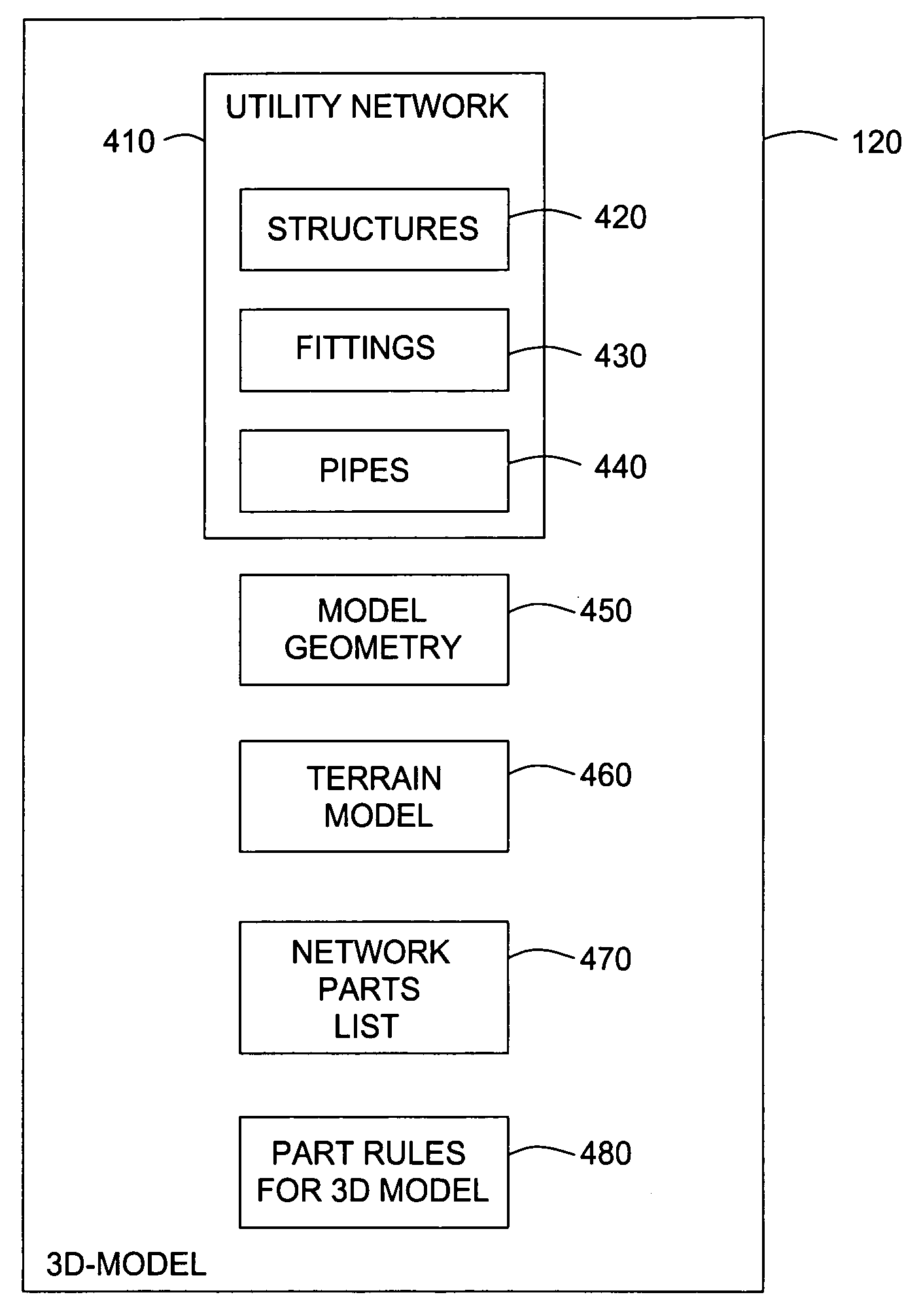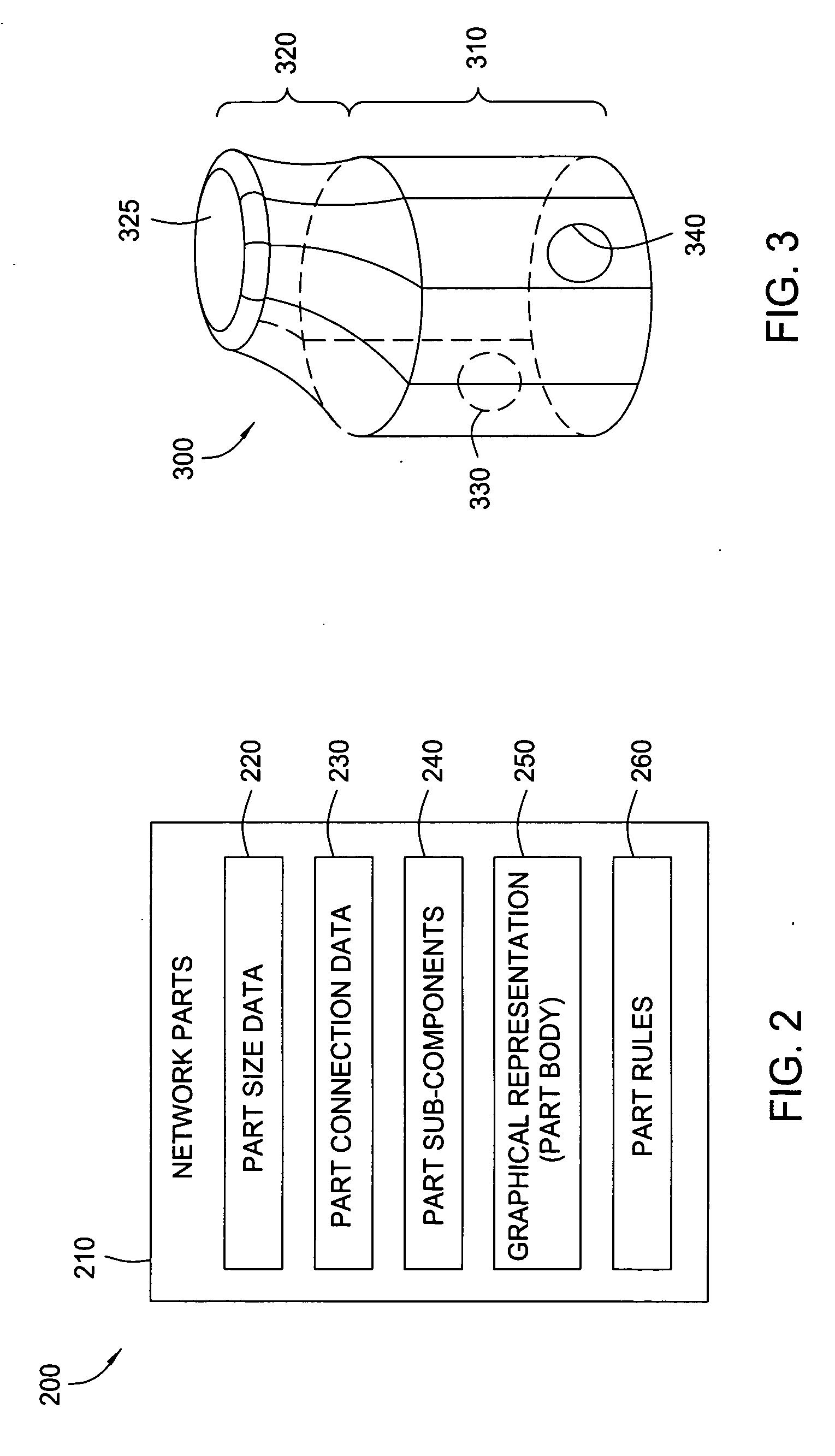Utility network engineering and design rules in three-dimensional models of utility networks
a utility network and engineering technology, applied in the field of computer software, can solve the problems of difficult to ensure that a given 3d model conforms to real-world design requirements, process can quickly become time-consuming and tedious, and subsequently changing or validating requirements is also difficul
- Summary
- Abstract
- Description
- Claims
- Application Information
AI Technical Summary
Benefits of technology
Problems solved by technology
Method used
Image
Examples
Embodiment Construction
[0026] Embodiments of the invention provide a method, apparatus, and article of manufacture for creating a computer-generated three-dimensional model (3D model) of a utility network that is composed from many network part objects (or more simply, just “parts”). Each part inserted into a 3D model may correspond to a real-world component of a utility network. Similarly, the 3D model may include terrain features modeling a real world location. As parts are selected and placed within the 3D model, the CAD application may be configured to process a collection of rules associated with each individual part. The rules may be used to manage a custom set of criteria for a given design project. For example, the network part rules may be configured to modify the data or attributes associated with a part when it is placed in the 3D model. Alternatively, the rules may be applied to an existing 3D model to identify any network parts that fail to comply with a given rule. This allows a user to iden...
PUM
 Login to View More
Login to View More Abstract
Description
Claims
Application Information
 Login to View More
Login to View More - R&D
- Intellectual Property
- Life Sciences
- Materials
- Tech Scout
- Unparalleled Data Quality
- Higher Quality Content
- 60% Fewer Hallucinations
Browse by: Latest US Patents, China's latest patents, Technical Efficacy Thesaurus, Application Domain, Technology Topic, Popular Technical Reports.
© 2025 PatSnap. All rights reserved.Legal|Privacy policy|Modern Slavery Act Transparency Statement|Sitemap|About US| Contact US: help@patsnap.com



